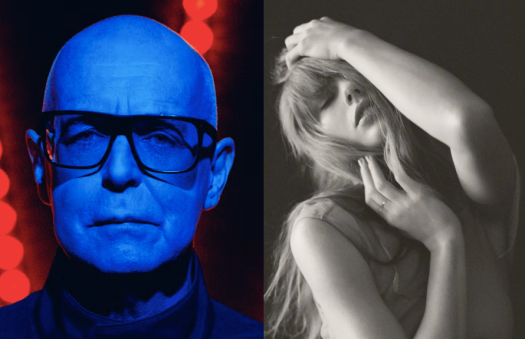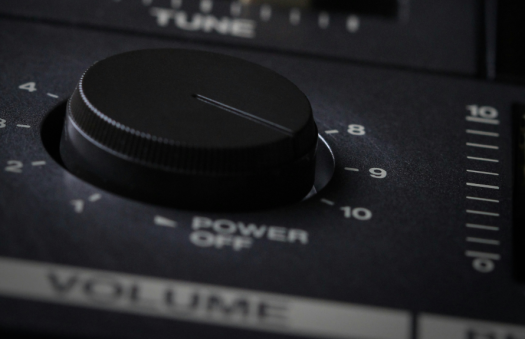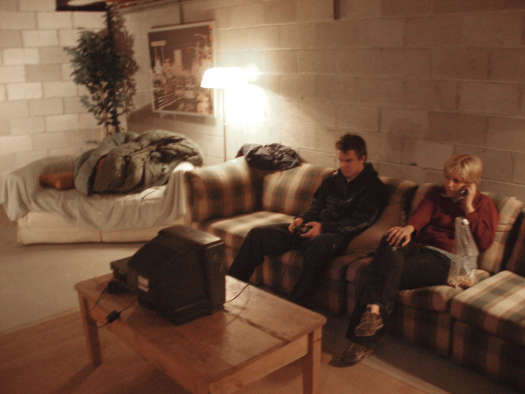When Run-DMC and the Beastie Boys (among others) made hip-hop a viable commodity, the music was just beginning to splinter into different sub-genres. Since then, hip-hop has branched off into so many different categories that fans of one type often are not fans of another.
Old School
More a time period than a particular sound, the old school covers the mid-70s to early 80s, a time dominated by the pioneers who built the music's foundation. The backbone was a simple breakbeat replayed by live musicians, while simple party lyrics grew from the DJ's need for a hype man. The old school ended with the introduction of the sampler and the brilliant idea of wearing street clothes on stage.
Defining Moments: Sugarhill Gang, "Rapper's Delight" (Sugarhill, 1980); Grandmaster Flash & The Furious Five, "The Message" (Sugarhill, 1982)
 Gangsta Rap
Gangsta Rap
When songs like "The Message" began telling "keep it real" tales of street life, gangsta rap was born. The beats were often hard (until Warren G and Dr. Dre introduced the world to g-funk) with often exaggerated lyrics about violence, drugs, and bitches. Despite a backlash in recent years by many underground artists, gangsta rap's commercial viability means it is here for the duration.
Defining Moments: NWA Straight Outta Compton (Ruthless/Priority, 1988); Schoolly D Smoke Some Kill (Jive/BMG, 1988); Ice-T Power (Warner, 1988)
 Acid Rap
Acid Rap
As a sound created by Detroit's Esham, acid rap is a mixture of gangsta rap and horror movies. Imagine Freddy Krueger rhyming over brooding beats about the many ways he can kill an individual. For a while in the mid-90s, it was mislabeled as horrorcore, when the Gravediggaz (featuring RZA and Prince Paul) bit E-Shamm. The violence and scary soundtrack of acid rap is still alive in Detroit artists like Eminem and Insane Clown Posse, as well as Necro and Cage.
Defining Moments: Esham Boomin' Words From Hell (Reel Life Productions, 1990); Insane Clown Posse Ringmaster (Psychopathic, 1994); Gravediggaz 6 Feet Deep (Gee Street/Polygram, 1994)
Underground
Misconstrued by the commercially-minded as being those hardcore artists who don't get much airplay (Redman, Master P, etc.), underground hip-hop is defined not so much by a sound as by a mindset music for yourself, not others. It usually comes from unsigned artists who find themselves with little to no airplay (including campus radio). Due to the lower budget, the tracks are usually more raw, often although not necessarily with a greater level of creative ingenuity.
Defining Moments: Dr Octagon Octagonecologyst (Bulk, 1996); Company Flow Funcrusher Plus (Rawkus, 1997); Styles Of Beyond 2000 Fold (Bilawn, 1998)
 Turntablism
Turntablism
The beats, samples and various cutting techniques of the DJ are very much alive, thanks to the newfound joys of turntablist crews like Invisbl Skratch Piklz, 1200 Hobos, and X-Ecutioners. In this new era of hip-hop there's a big difference between a DJ (one who just plays music) and a turntablist (one who creates new music like any other musician).
Defining Moments: Q-Bert Demolition Pumpkin Squeeze Music: A Preschool Breakmix (Independent, 1995); Mr Dibbs Turntable Scientifics (Independent, 1995); Q-Bert Wave Twister (Galactic Butt Hair, 1999)
Old School
More a time period than a particular sound, the old school covers the mid-70s to early 80s, a time dominated by the pioneers who built the music's foundation. The backbone was a simple breakbeat replayed by live musicians, while simple party lyrics grew from the DJ's need for a hype man. The old school ended with the introduction of the sampler and the brilliant idea of wearing street clothes on stage.
Defining Moments: Sugarhill Gang, "Rapper's Delight" (Sugarhill, 1980); Grandmaster Flash & The Furious Five, "The Message" (Sugarhill, 1982)
 Gangsta Rap
Gangsta RapWhen songs like "The Message" began telling "keep it real" tales of street life, gangsta rap was born. The beats were often hard (until Warren G and Dr. Dre introduced the world to g-funk) with often exaggerated lyrics about violence, drugs, and bitches. Despite a backlash in recent years by many underground artists, gangsta rap's commercial viability means it is here for the duration.
Defining Moments: NWA Straight Outta Compton (Ruthless/Priority, 1988); Schoolly D Smoke Some Kill (Jive/BMG, 1988); Ice-T Power (Warner, 1988)
 Acid Rap
Acid RapAs a sound created by Detroit's Esham, acid rap is a mixture of gangsta rap and horror movies. Imagine Freddy Krueger rhyming over brooding beats about the many ways he can kill an individual. For a while in the mid-90s, it was mislabeled as horrorcore, when the Gravediggaz (featuring RZA and Prince Paul) bit E-Shamm. The violence and scary soundtrack of acid rap is still alive in Detroit artists like Eminem and Insane Clown Posse, as well as Necro and Cage.
Defining Moments: Esham Boomin' Words From Hell (Reel Life Productions, 1990); Insane Clown Posse Ringmaster (Psychopathic, 1994); Gravediggaz 6 Feet Deep (Gee Street/Polygram, 1994)
Underground
Misconstrued by the commercially-minded as being those hardcore artists who don't get much airplay (Redman, Master P, etc.), underground hip-hop is defined not so much by a sound as by a mindset music for yourself, not others. It usually comes from unsigned artists who find themselves with little to no airplay (including campus radio). Due to the lower budget, the tracks are usually more raw, often although not necessarily with a greater level of creative ingenuity.
Defining Moments: Dr Octagon Octagonecologyst (Bulk, 1996); Company Flow Funcrusher Plus (Rawkus, 1997); Styles Of Beyond 2000 Fold (Bilawn, 1998)
 Turntablism
TurntablismThe beats, samples and various cutting techniques of the DJ are very much alive, thanks to the newfound joys of turntablist crews like Invisbl Skratch Piklz, 1200 Hobos, and X-Ecutioners. In this new era of hip-hop there's a big difference between a DJ (one who just plays music) and a turntablist (one who creates new music like any other musician).
Defining Moments: Q-Bert Demolition Pumpkin Squeeze Music: A Preschool Breakmix (Independent, 1995); Mr Dibbs Turntable Scientifics (Independent, 1995); Q-Bert Wave Twister (Galactic Butt Hair, 1999)




